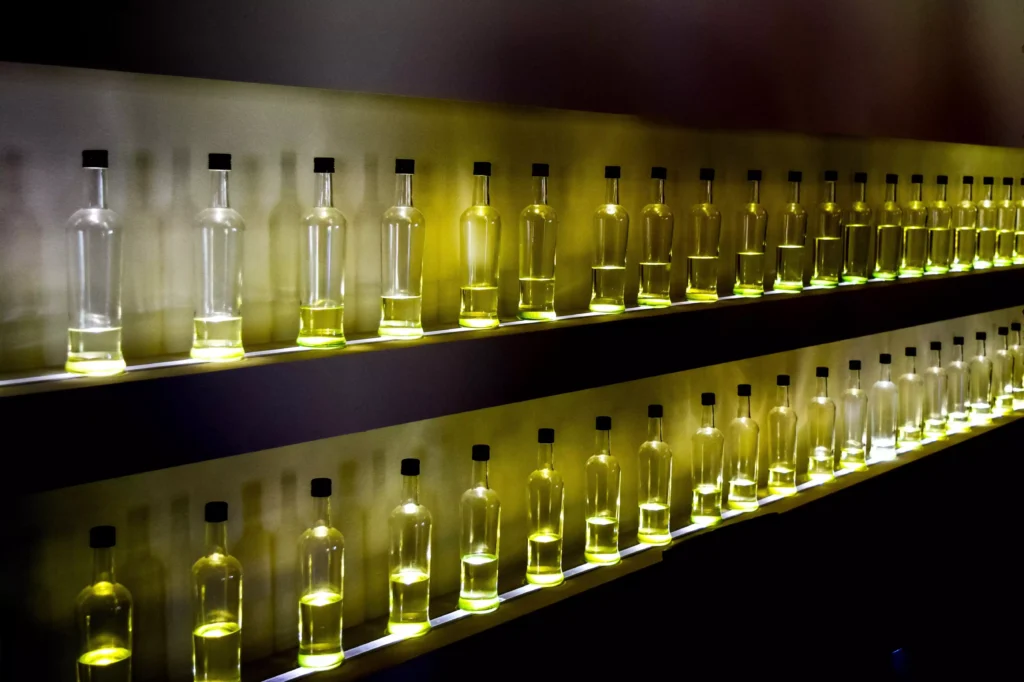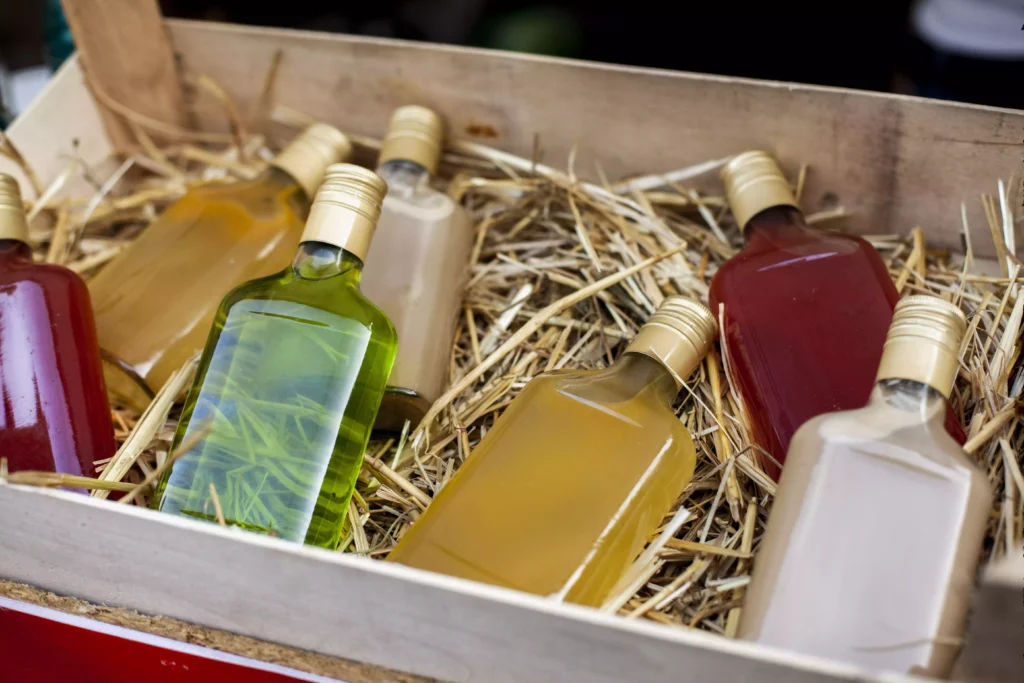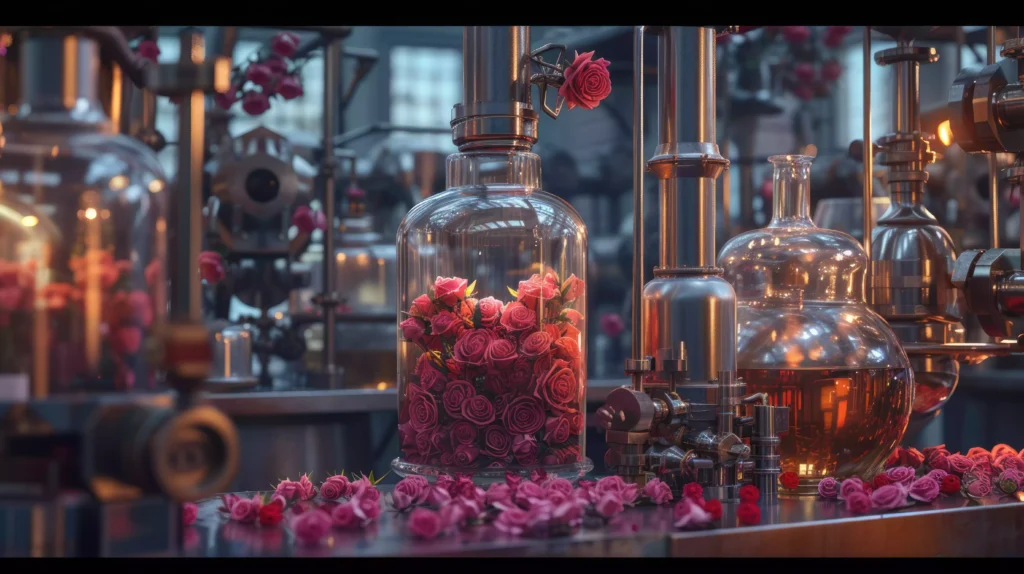How do you choose the perfect perfume? And how do you know if it will give you the scent you’re looking for?
Your understanding of fragrances and their concentration levels is key to selecting a perfume that suits your style and personality.
In today’s article from Jasmine Perfumes, we’ll explain the perfume concentration levels, the main types of perfumes, and the key differences between them. Stay with us as we guide you through the world of perfume concentrations. Let’s begin!
How to Differentiate Between Perfume Concentration Levels?
Every perfume has a specific concentration level, which typically determines the intensity of the fragrance oils, the amount of alcohol it contains, and its average longevity. Understanding the differences in perfume concentrations allows you to distinguish between six main types. These are summarized in the following perfume concentration table:
| Type of Perfume | Concentration Percentage | Longevity |
| Perfume | 20% – 40% | 12 -24 hour |
| Eau de Parfum | 15% – 20% | 6 – 8 hour |
| Eau de Toilette | 5% – 15%. | 4 – 6 hour |
| Eau de Cologne | 2% – 5% | 2 hour |
| Eau Fraiche | 1% – 3% | 1- 2 hour |
| Fragrance Oils | 10 % – 20% | 8 hours |
To enjoy concentrated and original perfumes, get in touch with us at Jasmine. We offer a variety of options to meet all your needs and suit every occasion.
Also read: Perfumers Alcohol: Types & Best Alcohol for Perfume
Guide to Perfume Concentrations
Perfume concentration refers to its strength—the higher the concentration, the purer the fragrance, containing a greater amount of essential oils and less alcohol. To familiarize yourself with the different types of perfumes based on their concentrations, which we briefly covered in the previous table, here is a more detailed explanation:
Perfume (Parfum)
Perfume, or Parfum, is the highest concentration of fragrance oils, crafted from a precise blend of aromatic oils extracted from natural sources like flowers, woods, and fruits, or high-quality synthetic compounds. It is characterized by its rich, heavy, and oily consistency.
Features of Perfume
- It comes at a higher cost due to its high concentration.
- It contains relatively low alcohol content, making it suitable for sensitive skin types.
- It typically has a concentration of 20%-30% fragrance oil, with some brands reaching up to 40%.
- It is ideal for special occasions, evening events, or moments when you want your scent to last for an extended time.
- Thanks to its high concentration of fragrance oils, perfume offers exceptional longevity, lasting up to 12 hours or more, and in some cases, up to 24 hours.
Eau de Parfum
Eau de Parfum is one of the most popular types of perfumes thanks to its balance between concentration and quality. It is made from balanced formulations of natural extracts such as flowers and woods, along with precise synthetic compounds that ensure the purity of the scent and a less dense consistency compared to pure perfume.
Features of Eau de Parfum
- It contains the second highest concentration of oils, with about 15 to 20% aromatic oils.
- It is most commonly available in spray form, although some brands also offer it as a mist.
- Despite its slightly higher alcohol content, it is suitable for those with sensitive skin.
- Eau de Parfum features a long-lasting scent, maintaining its pleasant aroma for about 6 to 8 hours a day.
- Whether you have a special occasion, a job interview, or even for daily use, Eau de Parfum is highly suitable for such time
Also read: Perfume Concentration: Types, Levels & Longevity

Eau de Toilette
Eau de Toilette is an old term that originally referred to a cleansing water added to bathwater, which has evolved into a fragrant concentration. It is generally lighter and less complex than Eau de Parfum, with a non-oily texture, composed of aromatic oils like florals and citrus, giving it a refreshing character.
Features of Eau de Toilette
- Eau de Toilette fragrances typically last about 2 to 4 hours.
- It contains a lower concentration of essential oils, typically between 5% and 15%.
- It is slightly cheaper than Eau de Parfum due to the lower concentration of fragrance oil.
- It is one of the most popular types of fragrances, suitable for summer and ideal for daytime or office use.
- Due to the low concentration of essential oils and high alcohol content, its scent tends to fade quickly.
Eau de Cologne
Eau de Cologne is one of the oldest forms and levels of perfumes. Crafted from top, middle, and base notes, the fragrance generally consists of citrus, floral, and herbaceous tones. Eau de Cologne is incredibly refreshing and light, often used as a revitalizer or an aftershave moisturizer.
Features of Eau de Cologne
- It is relatively inexpensive.
- It has a lower concentration level than Eau de Toilette, around 2 – 5%.
- The scent of most Eau de Cologne fragrances lasts for a maximum of two hours.
- It is traditionally considered a men’s fragrance, although there are also women’s versions available.
- It is extremely light, making it a good choice for use during the summer or for casual occasions.

Eau Fraiche
Eau Fraiche might be considered the weakest among all perfume types. It is a light, delicate, and gentle scent primarily composed of fresh water, which helps cleanse and refresh your skin. The low concentration of this water creates a casual, less intense aroma compared to cologne and deodorants.
Features of Eau Fraiche
- It is used to rejuvenate and refresh.
- The scent lasts up to two hours.
- It contains a concentration of 1% to 3%. The main ingredient is water with a touch of alcohol.
- You can be used as a body spray or as a light scent for daily use.
- Eau Fraiche is ideal for those who prefer a delicate fragrance or live in hot and humid climates
Read Also: Perfumery: Ingredients & Manufacturing Methods (Full Guide)
Fragrance Oils
Fragrance oils are the fundamental component responsible for the scent in the perfume Industry. They are characterized by their dense texture, which ensures the richness and depth of the fragrance composition. Extracted from natural sources such as flowers, fruits, and woods, or meticulously synthesized, these oils give the perfume its distinctive identity.
Advantages of Fragrance Oils
- Suitable for daily use or special occasions.
- Contain a pure oil base, without the use of alcohol or water.
- Essential oils carry a high concentration of fragrance components, between 10 – 20%.
- Possess a heavy oily consistency that enhances the scent’s concentration and allows for even distribution upon application.
Choosing the right perfume concentration depends on your personal needs. If you are looking for original, long-lasting concentrated perfumes, at Jasmine Perfumes Factory in Turkey, we offer a selection of concentrated perfumes that cater to all tastes. Contact our team via WhatsApp to help you choose your order.
Also read: Perfumery: Ingredients & Manufacturing Methods (Full Guide)

Jasmine is the Best Perfume Factory in Turkey and the Middle East
At Jasmine Company, we combine high craftsmanship with advanced technology to deliver luxury perfumes that reflect quality and authenticity. With extensive experience and a broad supply network, we are the prime destination for perfume enthusiasts and investors seeking a reliable partner. What sets us apart?
- Supply raw fragrance materials with the highest levels of purity and quality.
- Provide full support to e-commerce stores with ready-to-market, outstanding products.
- Customize innovative fragrance formulations to satisfy all tastes and markets.
- Committee to sustainability and quality in selecting natural and rare ingredients.
- Offer comprehensive services from design to packaging with high professionalism.
- Manufacture perfumes to global standards using the latest extraction and distillation technologies.
Also read: Guide to Importing Perfumes from Turkey: Steps and Documents
FAQs About Perfume Concentration
How to Increase the Concentration of Perfume?
To increase the concentration of a perfume, the alcohol content is reduced and the concentration of essential oils used in the formulation is increased, along with choosing materials that have high stability.
What Concentration Percentage is in Real Perfumes?
The concentration percentage of original perfumes depends on their classification. Extrait de Parfum contains an essential oil concentration ranging from 20% to 40%, which gives it strong longevity. Meanwhile, Eau de Parfum ranges from 15% to 20%, striking a balance between strength and diffusion.
What is the Highest Perfume Concentration?
The highest concentration in perfumes is found in Extrait de Parfum or pure perfume, which contains an essential oil percentage ranging from 20% to 40%. This concentration is known for its strong scent and high stability, making it the ideal choice for long-lasting performance and distinctive aromatic effectiveness.
What is the Concentration of Alcohol in Perfumes?
The concentration of alcohol varies depending on the type of perfume, typically ranging from 70% to 90% in most formulations. High-purity ethyl alcohol is used as a solvent to dilute the essential oils and ensure rapid evaporation, enhancing the even and effective distribution of the fragrance.